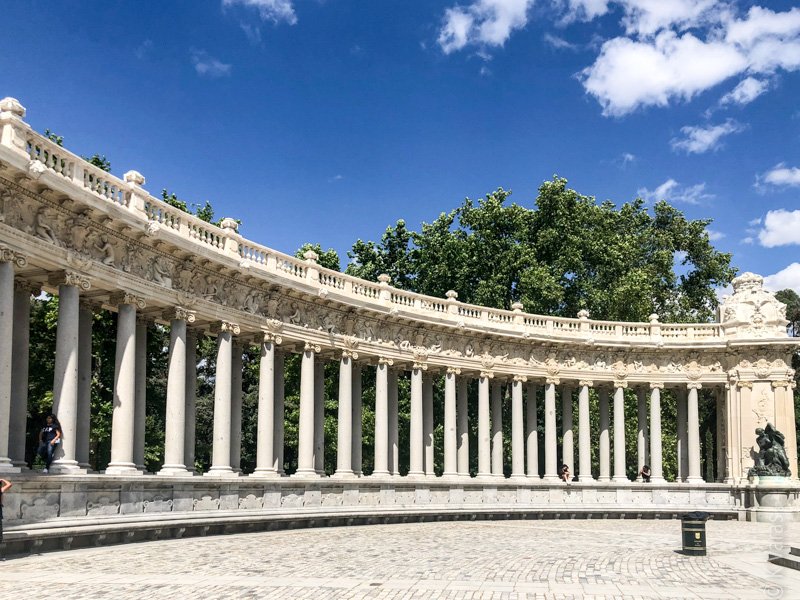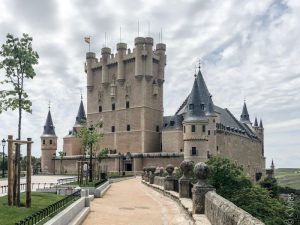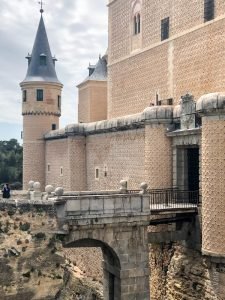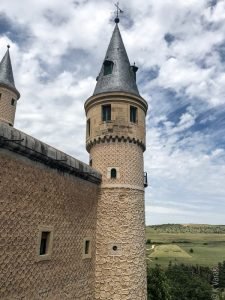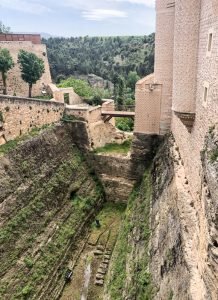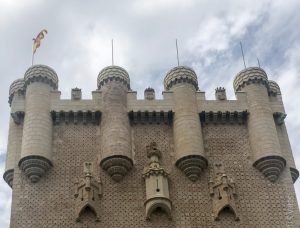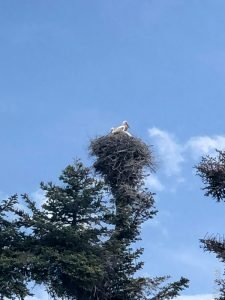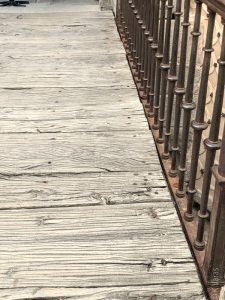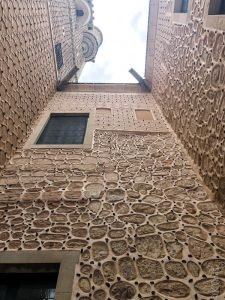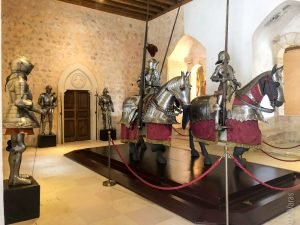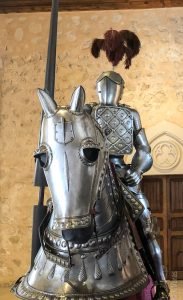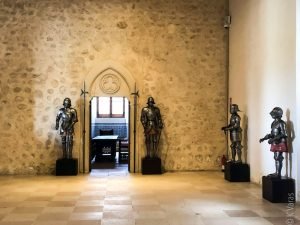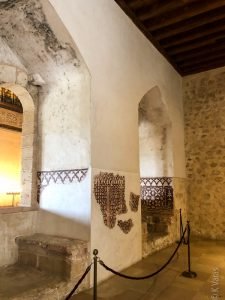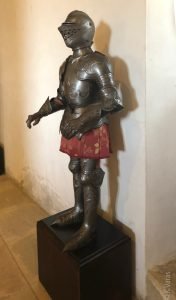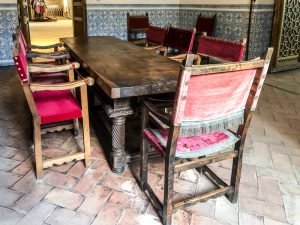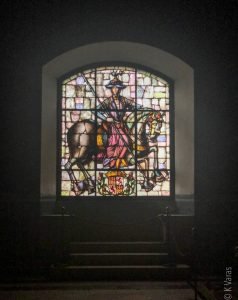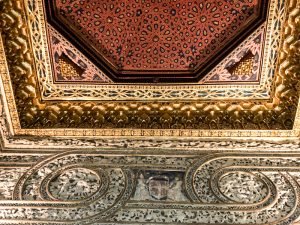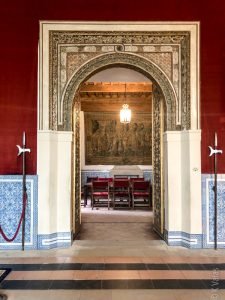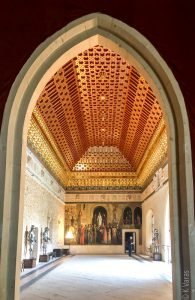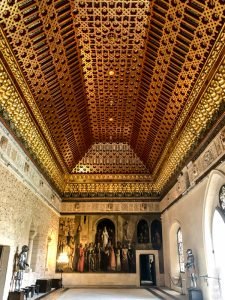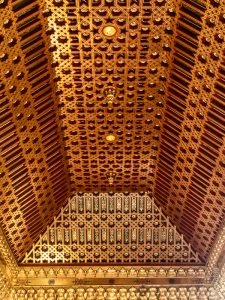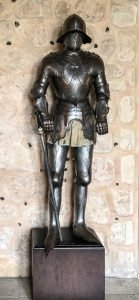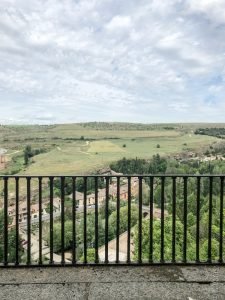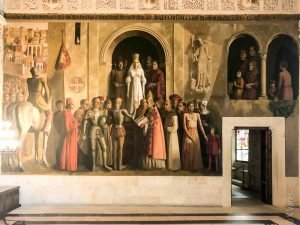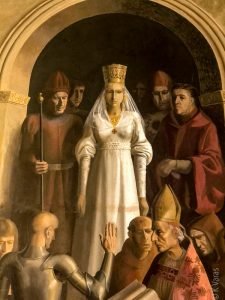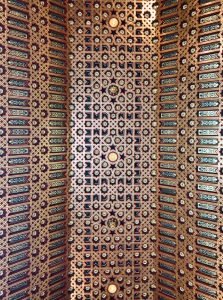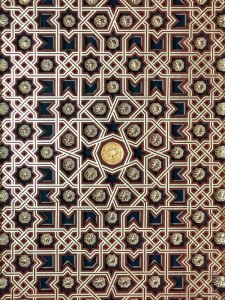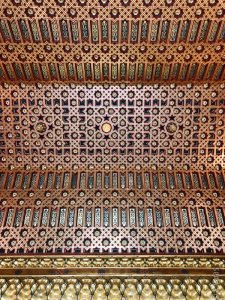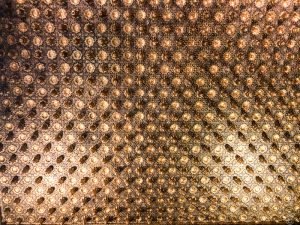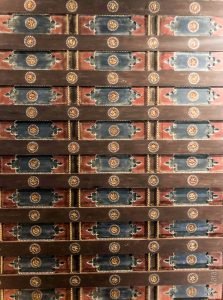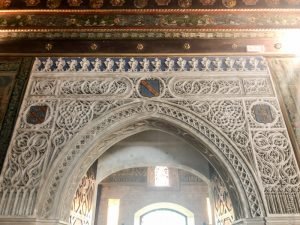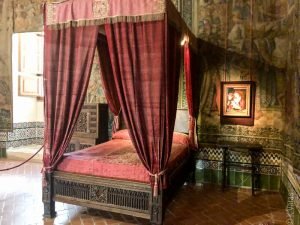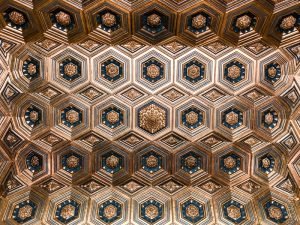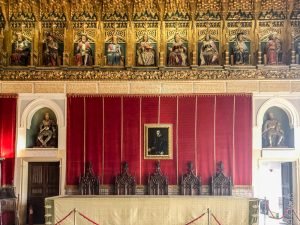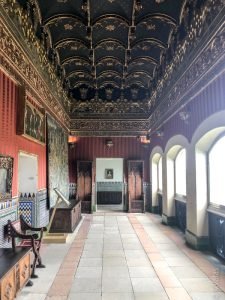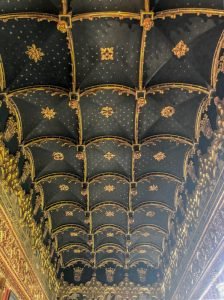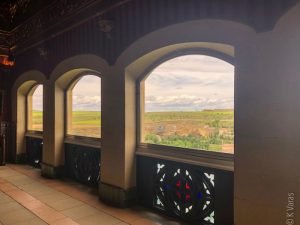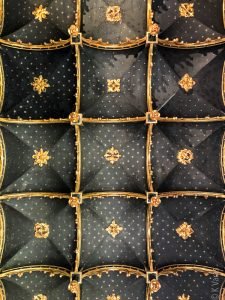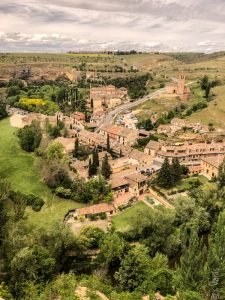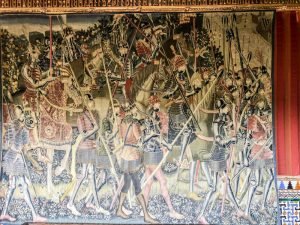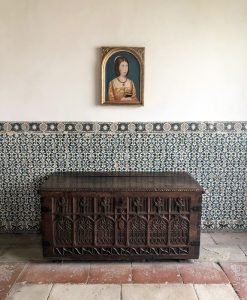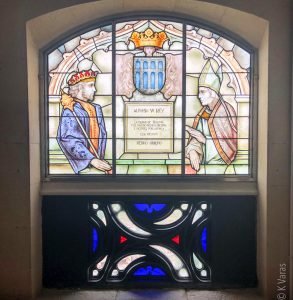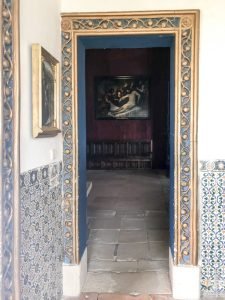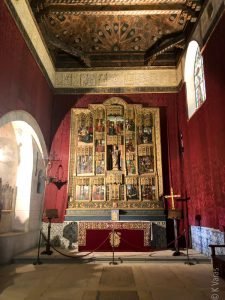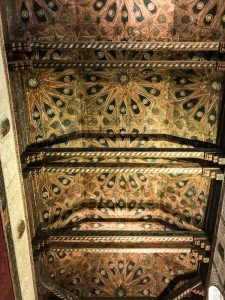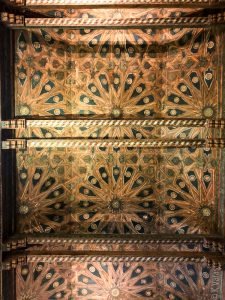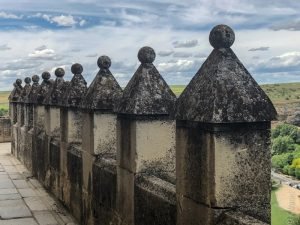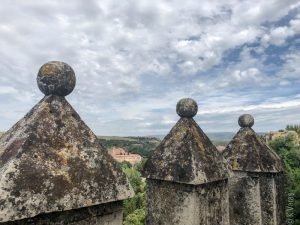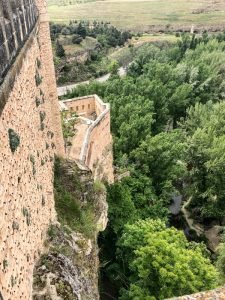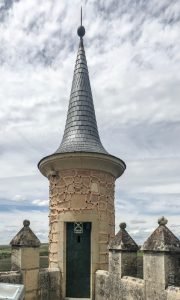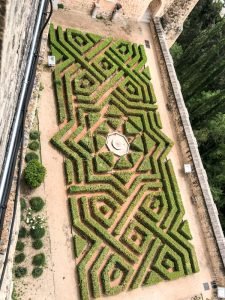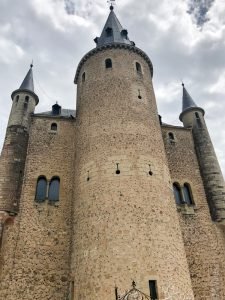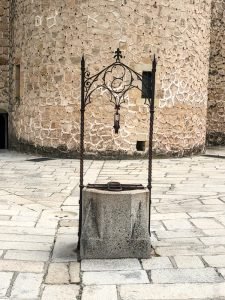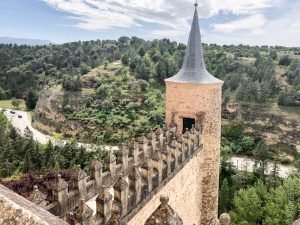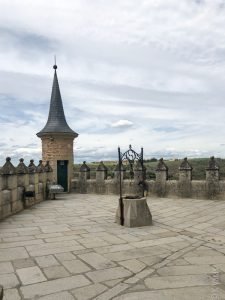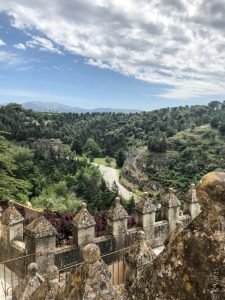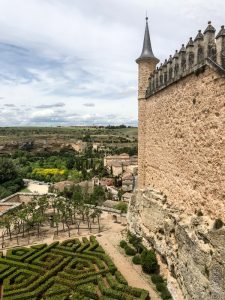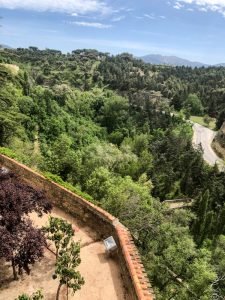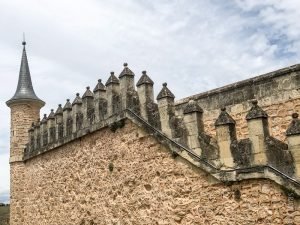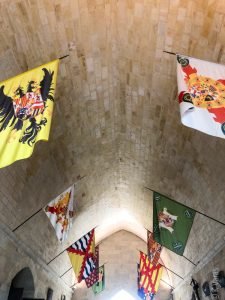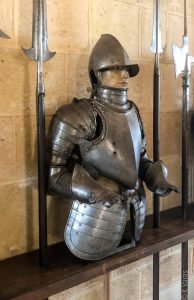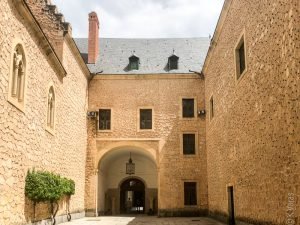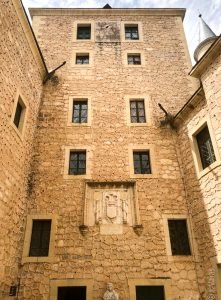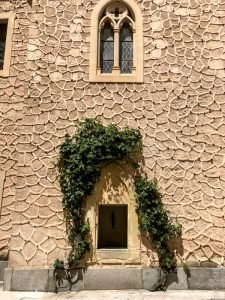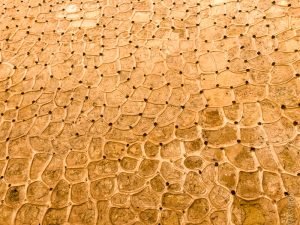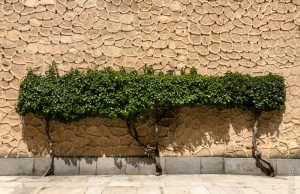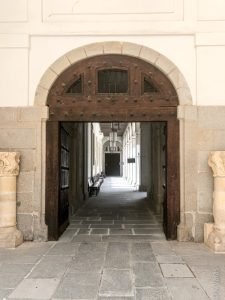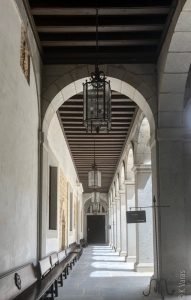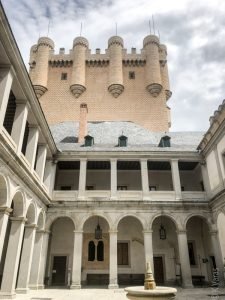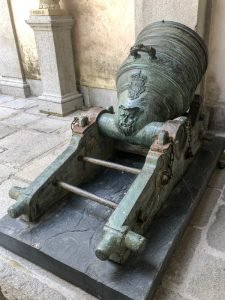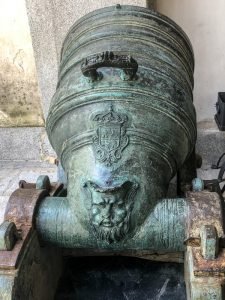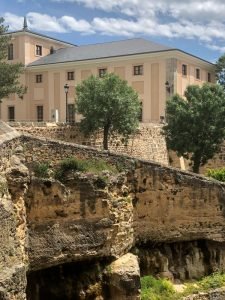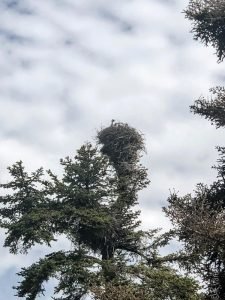
Alcázar de Segovia
There are many castles in Spain … probably too many to count (or visit in a lifetime) … but the Alcázar de Segovia is most definitely one of the most beautiful and worthy of a look. Perched high on the northwest tip of the hill that is old Segovia, it overlooks the valley and town below offering stunning views in all directions. Its shape resembles the bow of a ship, rather unusual for a place so far from the sea, but the original foundations (and the structure that no longer exists) were built by the Romans, and perhaps they were the ones who had the idea to make such a shape. Next came the Mediterranean Muslims but their fortress was wooden and little of it remains. It was King Alfonso XIII and his wife, in late XII century, who made this alcázar their principal residence initiating much of the work erecting the stone fortification.
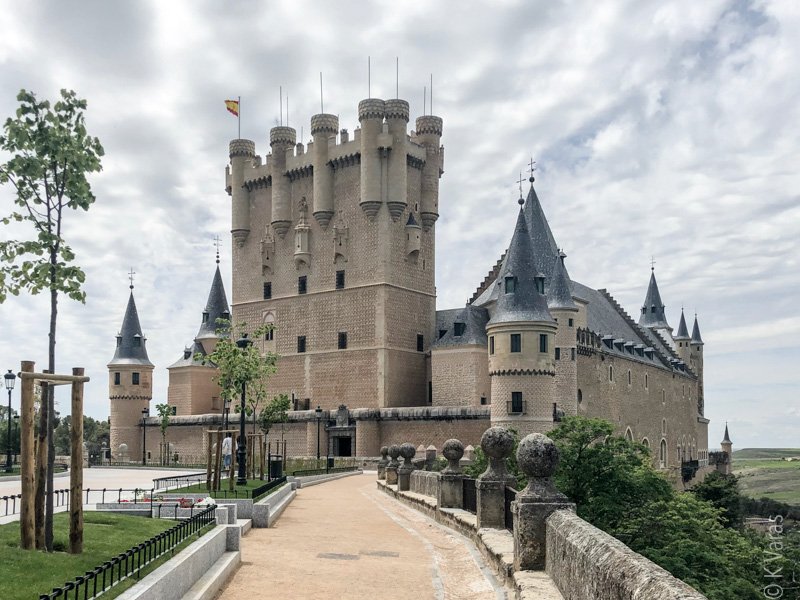
The Alcázar was a favourite of the Castilla kings and queens over the ages with each subsequent monarch adding their own stamp on it: among many improvements, Alfonso X built the Hall of Kings (1258), Juan II added the grand tower (XV century), and Felipe II adorned the roofs with sharp slate spires to reflect the castles of central Europe (late XVI century). Unfortunately the royal court eventually moved to Madrid and Segovia and its Alcázar suffered neglect until the creation of the Royal Artillery School which reinvigorated the city and raised its importance once again. Serving as a prison for close to 200 years, however, had a negative effect on the castle and it wasn’t until late XIX century that its roofs were restored and the building itself was given to the military to serve as a school. I couldn’t wait to get inside and see for myself how well they took care of it.
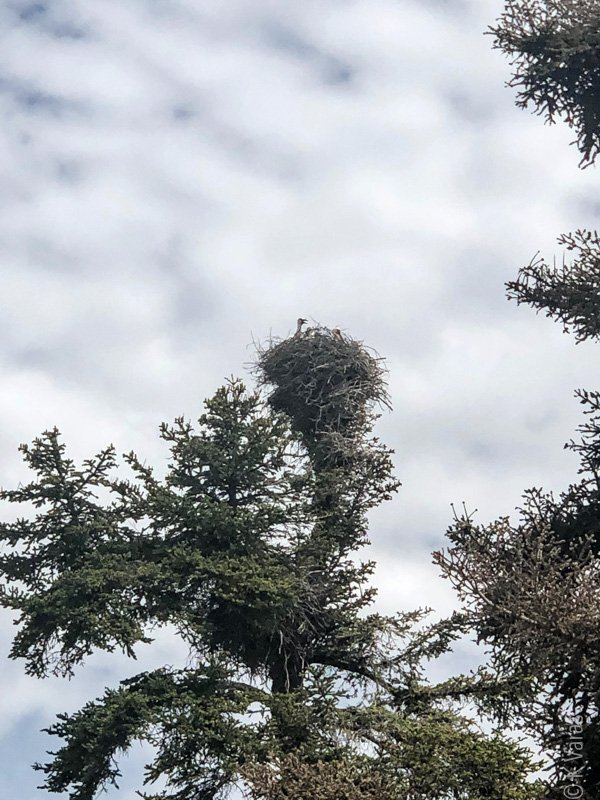
But first I had to make a U-turn and go back to Casa de la Química, an official-looking building at the other side of the grounds, where I could buy my ticket. Why they waited until I was at the entrance to the castle to tell me I needed to buy a ticket elsewhere, I do not know … don’t say I didn’t warn you when you go. Fortunately, my little detour allowed me to notice that there was a stork nest (maybe two) on top of a large tree in the little park between the castle and the ticket office. I’m sure I would have missed them otherwise so, for once, I will forgive the Spanish bureaucracy for not being obvious. But just this once. Ticket in hand, I crossed the rickety drawbridge that leads to the Alcázar: it’s hard to believe that such a fantastical fortress should have such a tiny entrance but I guess from a strategic point of view, how better to dissuade invaders than with a tiny narrow bridge hanging over a chasm … my fear of heights was going to be noticeable here, I was sure.
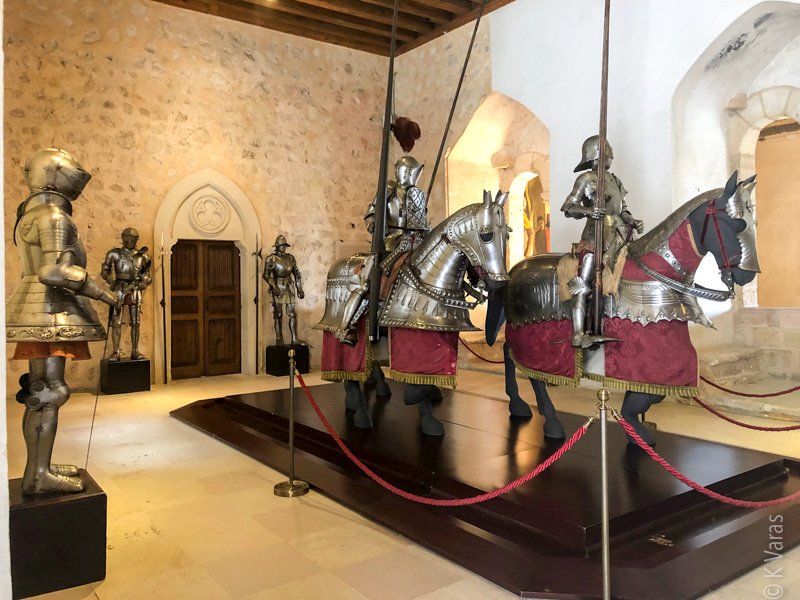
The first area I came into, la Sala de Palacio Viejo (the Old Palace Room), had a number of suits of armour lining the walls, and, if it hadn’t been for their ridiculous size, I would have felt quite intimidated by their presence. As it was, they all looked like dress-up suits made for children, many of them not even reaching my chin, and they were on raised platforms. Once again I was reminded how much bigger we are now, even the Spaniards, thanks to better nutrition and mixing with taller northerners. Still, while I find in comical on one hand, it is hard not to give these “little” guys credit for conquering a whole continent and a bit, even at such small stature.
From there I proceeded through Sala de la Chiminea (Chimney Room), Sala del Trono (Throne Room), the beautiful Sala de la Galería (Gallery), to the Sala de las Piñas (Pinecone Room, not Pineapple, so named because of the 392 pinecones carved into the ceiling). Eventually I reached the King’s bedroom, which, considering the size and relative opulence of the castle so far, seemed a bit underwhelming to be such an important room. His bed, too, was awfully small, but then I should remember his size and maybe it didn’t feel so small to him. Keeping rooms warm in the old days was also a problem which would explain its location (internal, i.e. with no windows to the outside but rather to the inner courtyard).

More stately rooms came next, and these got bigger and fancier, as they were clearly the public areas of the palace. The more intimate parts are usually hidden away (often in the walls) or on other levels where the tourists never reach, unfortunately. Instead, I walked through la Sala de Reyes (Hall of Monarchs) with its many carvings of various royals, Sala del Cordón (Hall of the Rope), and the Chapel. The other side of this floor is closed off and part of the military school that is still housed here. Each room on this royal side, however, has amazing views to the north and northwest, something I never got tired of looking at and photographing.
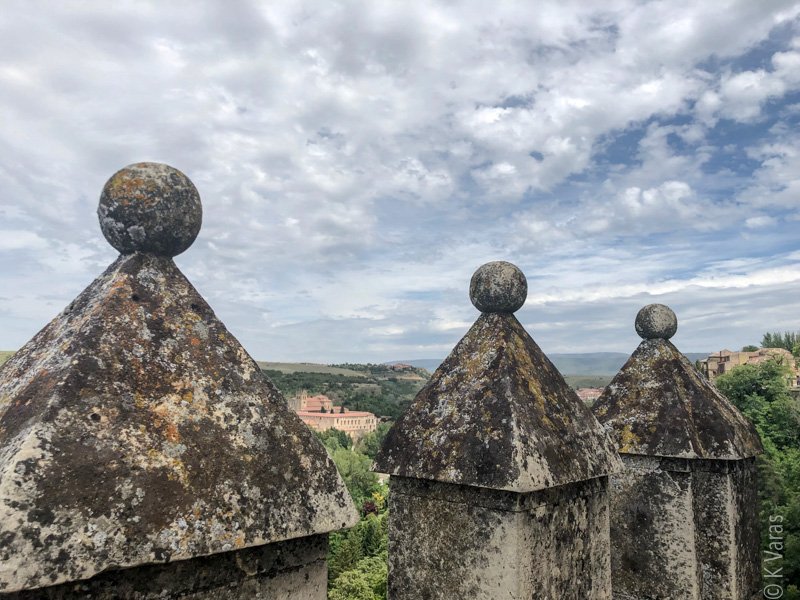
From there I was able to step outside and get an even closer look at that spectacular vista. The Royal Terrace offers more than 270° views out towards the plains of Valladolid, where you can see for miles. I also got a much closer look at the Juan II tower which loomed above me. Being on the terrace unfortunately brought home how terribly high I was, and how more and more I was starting to get nervous about being that high. Silly me, thinking I was in danger walking around a structure that has been there for hundreds of years … still, those walls overlooking the “abyss,” while thick, weren’t terribly high, and the steps down to one of the towers, very steep. Not that that stopped me, of course, how else would I conquer fear if not by walking out onto an even more precariously (in my eyes) placed walkway. To my dismay, and for lack of signage, it was a dead end and I had to climb back up again. I’m not sure if I conquered my fears but I certainly survived them. The positive side of all this was that I got to see the gardens below–always a treat.
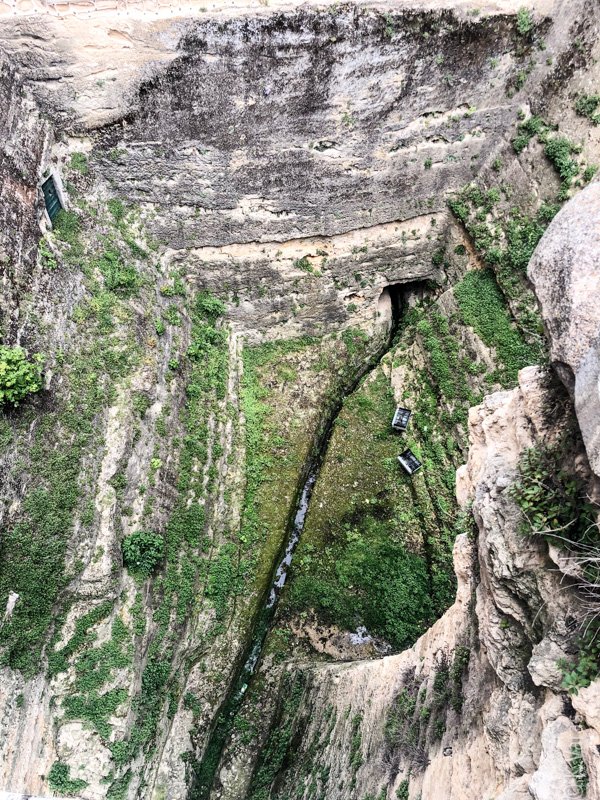
The last room I saw was the Sala de Armas (Hall of the Armaments), where more knightly objects were on display, including various swords and other pointy killing tools, suits of armour, and even a small–but I’m sure deadly–cannon. From there I made my way out, albeit slowly, savouring the walls and their decorations. It is a shame that so little of the castle is actually open to the public, as I am sure there are many areas in the towers and below that hold hidden treasures. As I walked out to the little bridge again, I could feel echos of the past as I looked down at the depths of the moat, or what I assumed was the moat. I ended up finding a bench in the little park in front just to sit there and gaze upon this wonderful castle, making me promise myself to return, as soon as possible.
NB This was the first time when I really wished I had access to a drone, just to be able to get a good picture of the “bow” of this castle … that’s what you usually see in external photos of this place. I’m sorry I couldn’t do that for you but here are some Google was happy to provide.
